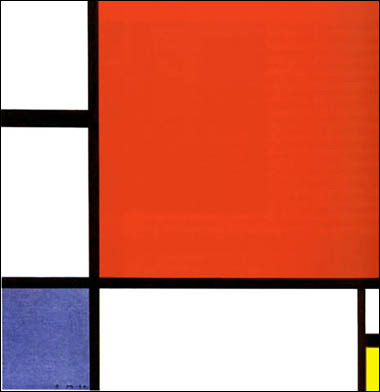In my original answer to the question of whether representation is an essential function of artwork I concluded that representation was instead incidental, and after studying further, I retain this conviction, but hopefully am better prepared to defend it. In order to do so though, I will first have to revive the notions I employed earlier of art’s powers of general communicability, and particular communicability. General communicability refers only to an artwork’s letters and language, its constituent parts which would carry meaning outside of the realm of art: in a novel, the words; in a painting, the brushstrokes; in a musical composition, the notes. Particular communicability on the other hand refers to the more specific sense in which a work of art represents an intended or unintended motif: in a novel, a theme; in a painting, a human figure; in a musical composition, a feeling of joy. Neither of these, the only senses in which an artwork can thought to be representational, can be said to be present in all art and are therefore not essential to it.
Croce makes the observation that “it is clear that the poem is complete as soon the poet has expressed it in words which he repeats to himself. When he comes to repeat them aloud, for others to hear, or looks for someone to learn them by heart and repeat them to others as in a schola cantorum, or sets them down in writing or in printing, he has entered upon a new stage, not aesthetic but practical” (276). The words themselves are merely placeholders for ideas which are the objects of the poem, emissaries that carry the poem’s objects through different mediums and into different settings, but these elements of general communicability are not the poem itself, nor the objects of the poem. Those are instead elements of particular communicability, and though integral to this particular poem, those objects of the references are not necessarily integral to all artwork.
But for a more difficult case, take again into consideration Mondrian’s “Composition II in Red, Blue, and Yellow.”
These lines and shapes were explicitly intended to not have a referent, yet the experiencer of art cannot help but find referent to Mondrian’s unintended reference. Perhaps an arial view of fields is evoked. However, the fact that this referencing cannot be helped by the subjective experiencer of the artwork is problematic because it means that the subjective experiencer concocts references in every experience, even experiences of objects which have no human author and are obviously not art, for example, a rock that resembles a face or a tree which resembles a steeple.
If the subjective view from the experiencer of art cannot give a reliable account of representation being essential to artwork, can the view from the creator of art? If art is the product of the same human brain which has no choice but to see references all around and invent referents, can art every truly be divorced from particular communicability? The musical discipline of total serialism can help decipher this. Total Serialism is the musical progeny of the Second Viennese School of Schoenberg, Webern, and Berg taken to the extreme. Every aspect of a composition from the dynamics to the rhythm to the pitches is meticulously mathematically derived such that no centrality of the work can be dwelled upon. Boulez’s “Polyphonie X” is an example of an artwork which, though created by a subjective brain which is slave to representation, employs objective means to create something which truly intends no particular communicability.
If general communicability has no bearing on the intrinsic nature of artwork, if particular communicability via the senses of the audience can be disregarded, and if the artist can create without the use of particular communicability, then the inevitable question arises: is art which isn’t intended to communicate, which in its construction defies communicability, really art? Is total serialism art? Croce doesn’t think so, claiming that “if the task of the painter were to combine lines and lights and colours with ingenious novelty of invention and effect, he would be not an artist, but an inventor” (271). While Croce refers to the abstract painter, the same could be said of the avant-garde composer. However, I believe that Croce’s claim is arbitrary and his fears unfounded. I find it more fitting to include the inventor with the artists than to exclude the abstract artists from them, though with an improved definition, the inventor need not be allowed into the category. I propose then, as a new definition of art which can account for art without necessary representation, an invention without utility except intellectual pleasure; without utility so as not to include the merely useful (cameras, sofas, cars) and not the merely pleasurable (jokes, drugs, pornography). To provide for the both useful and intellectually pleasurable (a fancifully decorated car), one could propose that an object occupies an intersectional status between invention and artwork, and is both fully a work of art and fully a useful object, but this is a problem for another day.
Cahn, Steven M., and Aaron Meskin. Aesthetics: A Comprehensive Anthology. Malden, MA: Blackwell Pub., 2008. Print.

No comments:
Post a Comment